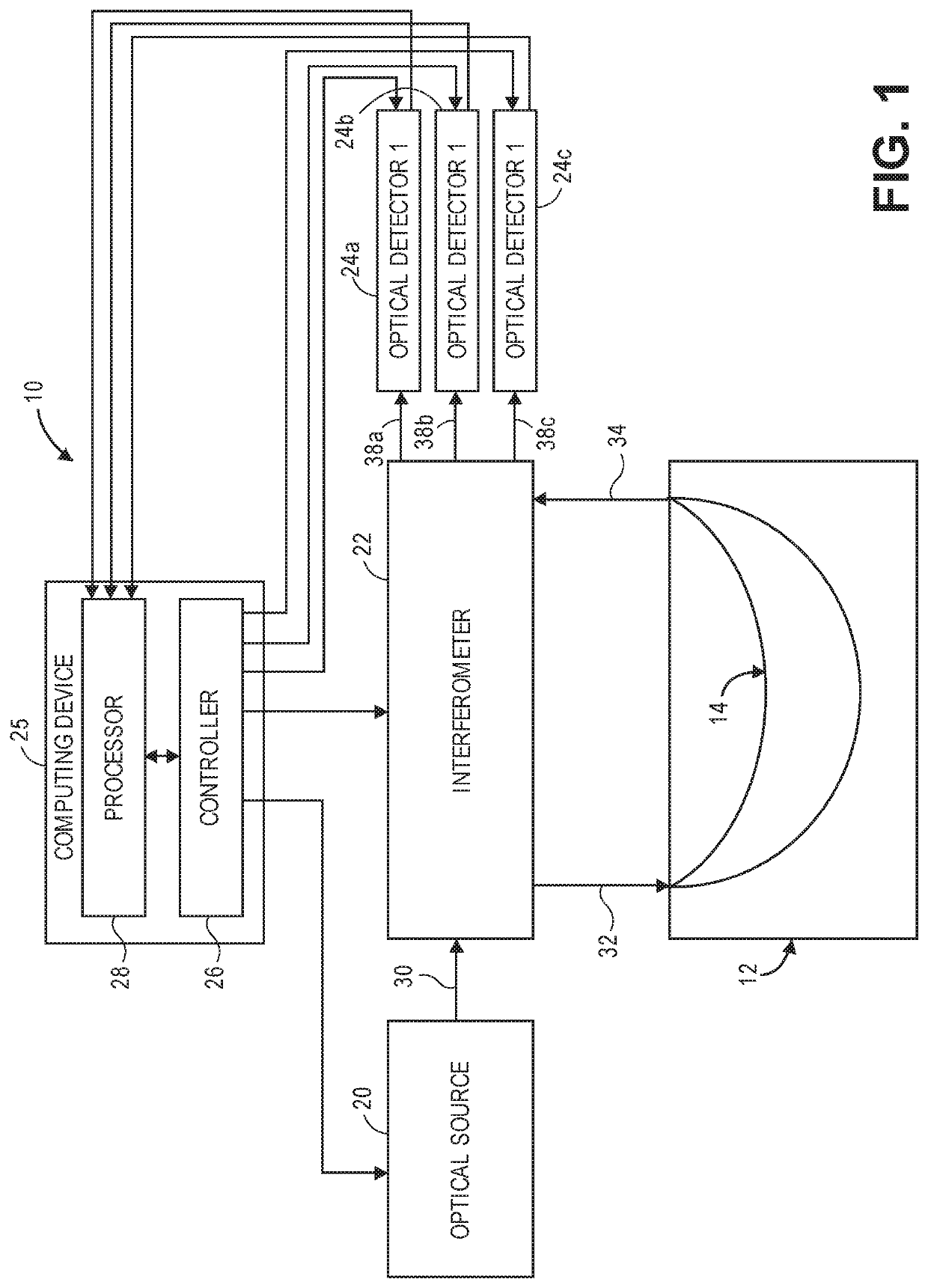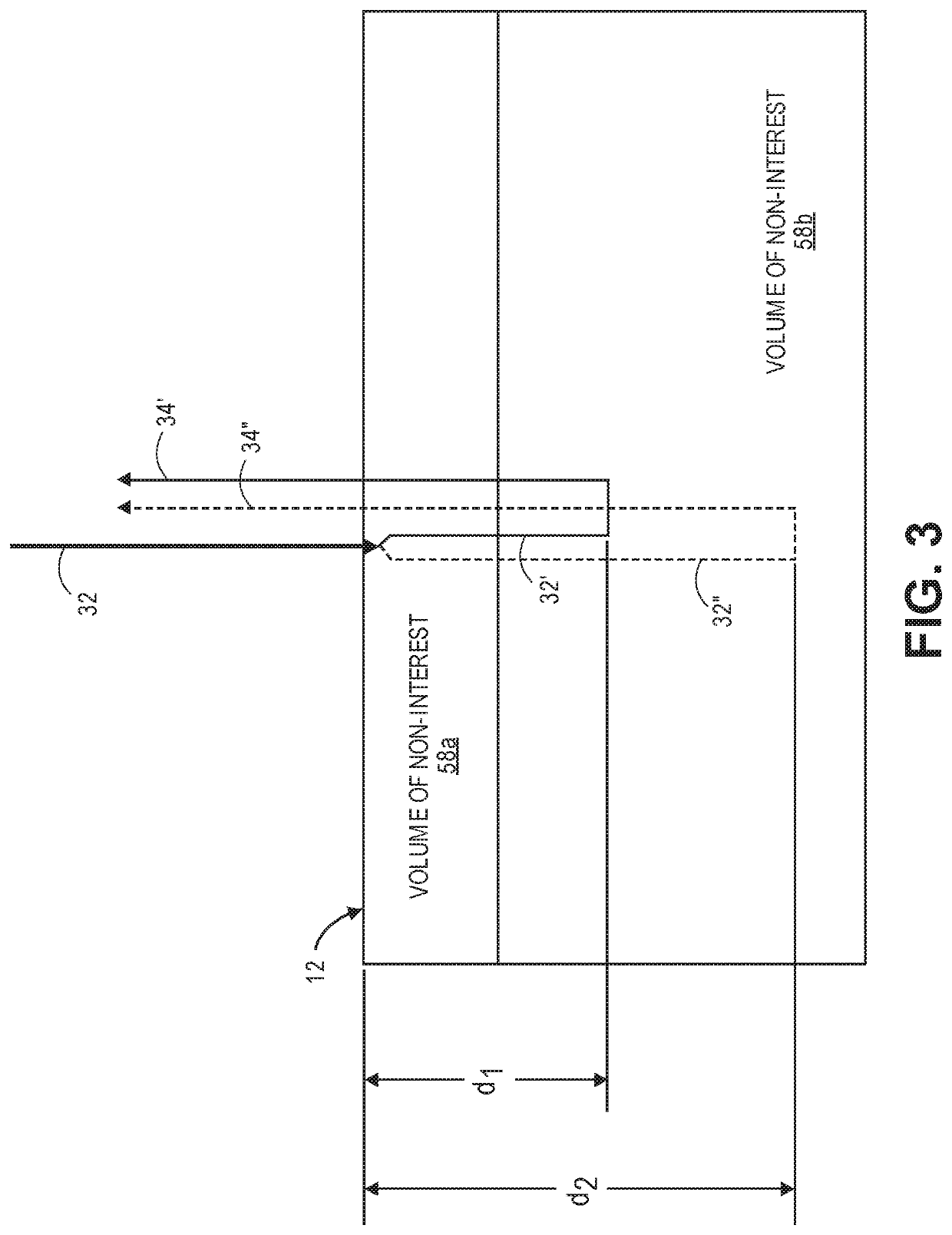Non-invasive optical measurement system and method for neural decoding
a neural decoding and optical measurement technology, applied in the field of non-invasive optical measurement systems and neural decoding, can solve the problems of limited spatial resolution of conventional optical detectors, limited usable penetration depths, and order of centimeters, and achieves improved temporal sensitivity to fast optical signals, simple and less expensive
- Summary
- Abstract
- Description
- Claims
- Application Information
AI Technical Summary
Benefits of technology
Problems solved by technology
Method used
Image
Examples
Embodiment Construction
[0040]Referring now to FIG. 1, a generalized embodiment of an optical measurement system 10 constructed in accordance with the present inventions will be described. The optical measurement system 10 is a holographic optical system (i.e., a system that mixes detected signal light against reference light in order to increase the signal-to-noise ratio (SNR) of the relevant signal). As such, the optical measurement system 10 focuses on the measurement of multiple-scattered signal light of a depth-correlated optical path length, and is capable of detecting physiological events in tissue at a penetration depth of multiple centimeters, as opposed to ballistic signal light measured by a traditional Optical Coherence Tomography (OCT) system.
[0041]The optical measurement system 10 utilizes a simple and relatively inexpensive, low coherence, continuous wave (CW) source, in contrast to the pulsed laser or swept laser respectively required by TD-NIRS and FD-NIRS systems (see Background section)....
PUM
 Login to View More
Login to View More Abstract
Description
Claims
Application Information
 Login to View More
Login to View More - R&D
- Intellectual Property
- Life Sciences
- Materials
- Tech Scout
- Unparalleled Data Quality
- Higher Quality Content
- 60% Fewer Hallucinations
Browse by: Latest US Patents, China's latest patents, Technical Efficacy Thesaurus, Application Domain, Technology Topic, Popular Technical Reports.
© 2025 PatSnap. All rights reserved.Legal|Privacy policy|Modern Slavery Act Transparency Statement|Sitemap|About US| Contact US: help@patsnap.com



